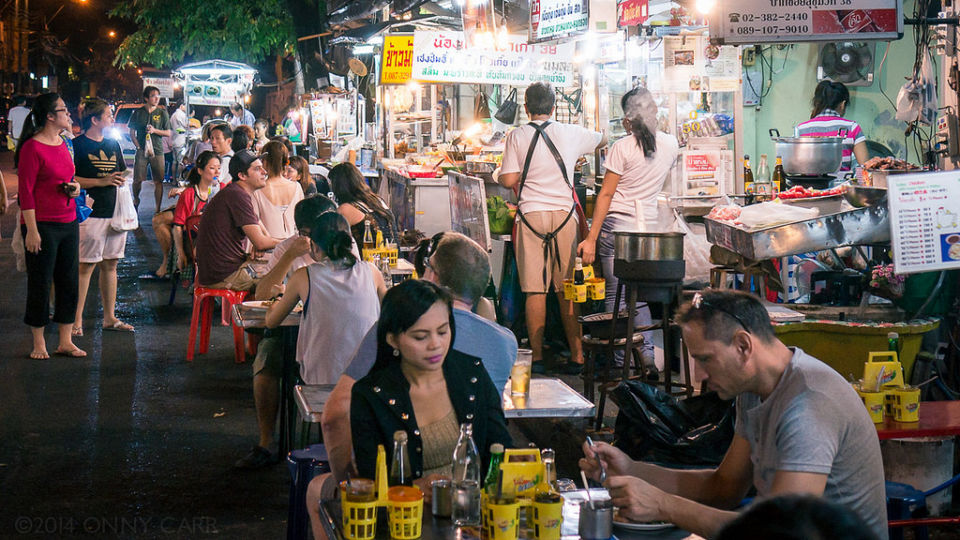A representative of Bangkok street sellers said today that street food and other vendors were open to a city plan to relocate them to designated areas, provided the new locations were beneficial and practical.
In response to Bangkok Gov. Chadchart Sittipunt’s plan to force street vendors to operate in 31 areas designated as Singapore-style hawker centers, the president of the Bangkok Vendors Association said merchants were willing to move if doing so wouldn’t hurt their business.
“I own a vendor stall myself, and after talking to fellow vendors, they’re willing to make the change as they usually don’t like to loiter in the same spot,” Raywat Chobtham told Coconuts. “They’re willing to pay the local tax as it’s their own space.”
He said city officials should meet with the vendors to discuss the details, at which point, “We can move forward.”
But the new locations would have to be practical, he added.
“Everyone is willing to move if the new areas can give them a chance to sell,” Raywat said. “Nobody wants to move if they can’t sell like they used to. They wouldn’t know how to start over again if they’re selling in a new area.”
He noted that in the past, the city has attempted to outright ban street vendors in places such as Siam Square.
“In the past, the city didn’t want them to move but to ban them,” he said.
Indeed, the military embarked on a cleanliness and order campaign after it seized power in 2014. Popular but chaotic markets such as Khlong Thom and Saphan Lek in the old quarter were shut down, and many of the once-ubiquitous vendors lining places like Silom Road, Siam Square, and Thonglor were cleared out.
While many residents were happy to see them go, others lamented the loss of the vibrant street culture for which the Thai capital is famous.
In some cases, the government offered new areas to operate that vendors complained were remote and impractical.
Raywat noted failed efforts to move vendors to places such as the Uruphong Intersection in the Ratchathewi district.
“We tried setting it up three times, and it cost a lot of money,” he said. “That area used to be the parking lot for Pathum Wan district garbage trucks. They tried turning it into a market, but it wasn’t convenient for anybody involved. It had a one-way street that proved inconvenient for many.”
Raywat stressed that any relocation should help the street vendors and not be a nuisance to anyone else.
“Hopefully, wherever they move should have enough space,” Raywat said. “When Aswin Kwanmuang was governor, he was able to find areas, but they proved to be bad for vendors as they couldn’t sell their products like they used to.”
He suggested that Chadchart look at private property, though it may be prohibitively expensive. He said renting a storefront at some place like the Platinum Mall in Pratunam cost upward of THB70,000 (US$1,912) which would be “impossible” for vendors.
On Tuesday, Chadchart announced the city would designate more than two dozen areas for unregulated street vendor stalls to operate. For example, he suggested one could be established at the Phran Nok Market, near Thonburi Hospital on the Thonburi side of the river.
The goal, he said, was to provide everyone with affordable food and allow vendors to continue making a living without obstructing sidewalks.




